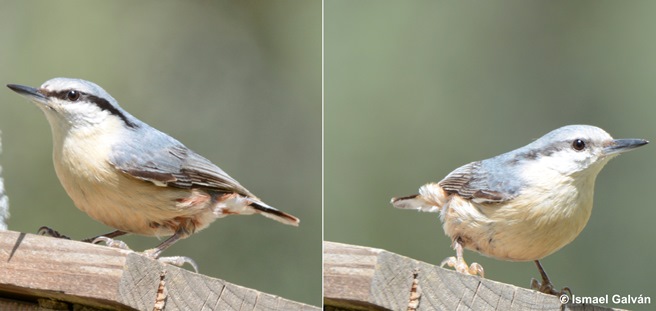Sexual selection can drive the evolution of phenotypic traits because of female preferences for exaggerated trait expression in males. Sexual selection can also lead to the evolutionary loss of traits, a process to which female preferences for diminished male trait expression are hypothesized to contribute. However, empirical evidence of female preferences for diminished male traits is virtually lacking. Eurasian nuthatches Sitta europaea provide an opportunity to test this possibility, as a chestnut flank patch produced by the pigment pheomelanin is present since the first plumage of these birds and its color is more intense in nestlings in poor condition in our study population. It has been proposed that developing birds in poor condition may increase their production of pheomelanin as a detoxifying strategy. Female nuthatches may thus prefer mating with males showing flank feathers of diminished color, as this could indicate that males experienced good conditions early in development, which can positively affect the fitness of future generations. Here results according with this prediction in a wild population of Eurasian nuthatches are shown, as adult males with lighter chestnut feathers paired earlier in the season, while chestnut coloration had no effect on female mating success. Chestnut color expression was not affected by the body condition of birds, suggesting that females obtain information on the body condition in early life of their potential mates and not on their current body condition. This constitutes one of the few examples of females mating with males showing diminished traits and provides the only explanation so far by which this process can occur. informacion[at]ebd.csic.es: Galvan & Rodríguez-Martinez (2018) Females mate with males with diminished pheomelanin?based coloration in the Eurasian nuthatch Sitta europaea. J Avian Biol. Doi 10.1111/jav.01854
https://onlinelibrary.wiley.com/doi/abs/10.1111/jav.01854








 Las altas temperaturas están provocando que las lagunas y las marismas de Doñana pierdan agua rápidamente
Las altas temperaturas están provocando que las lagunas y las marismas de Doñana pierdan agua rápidamente



